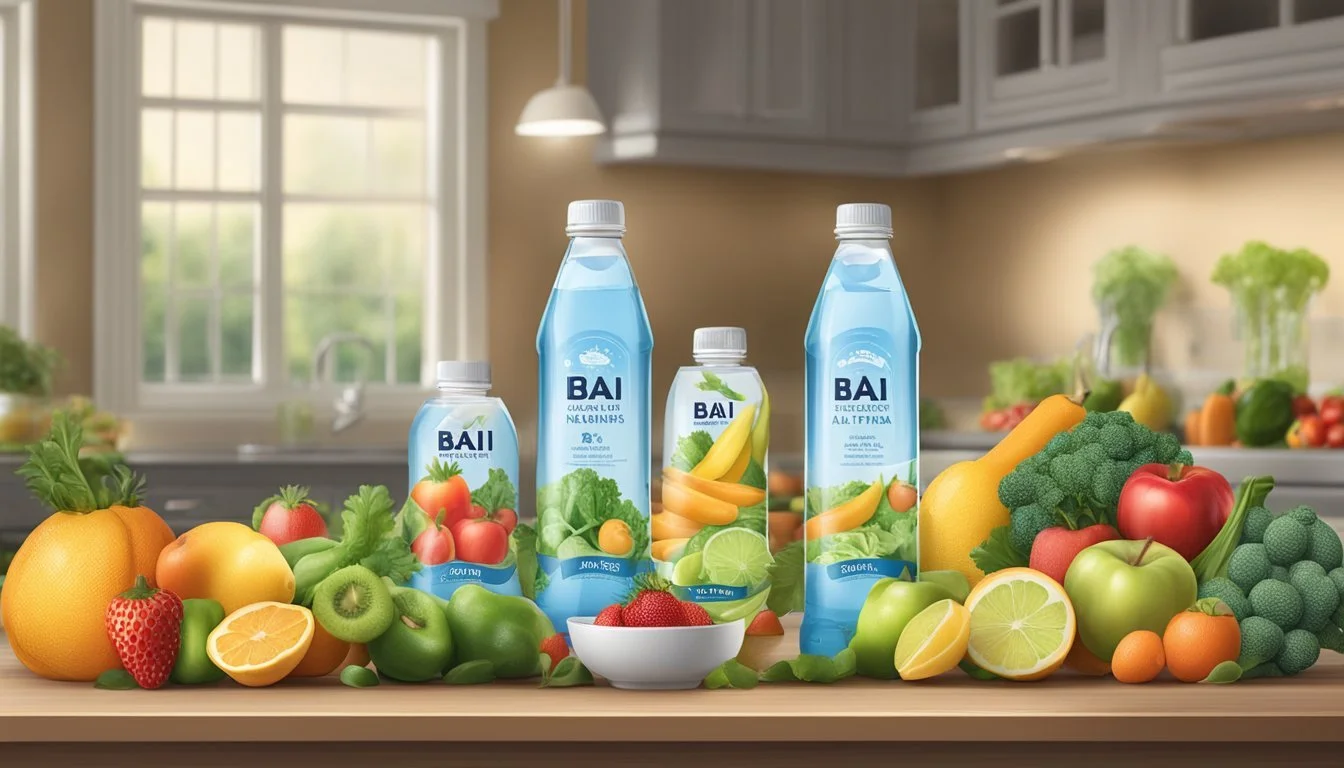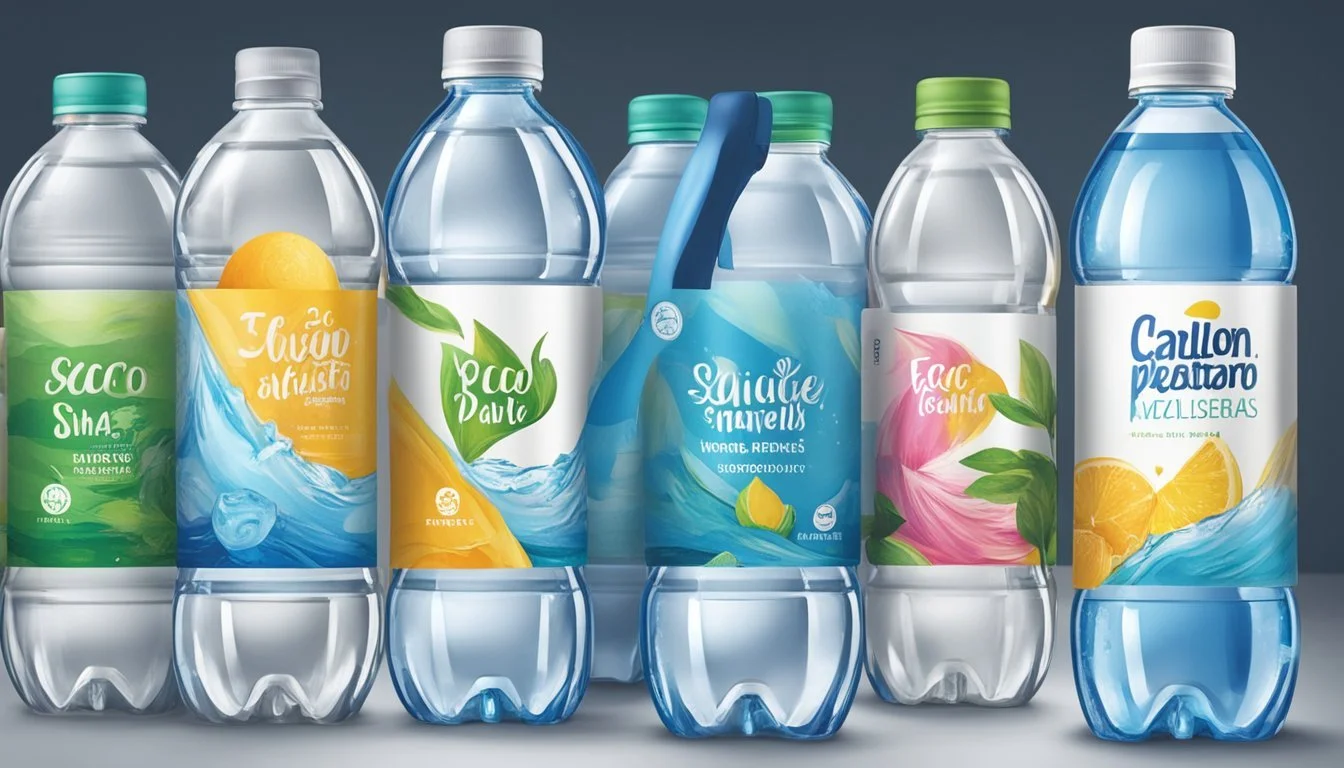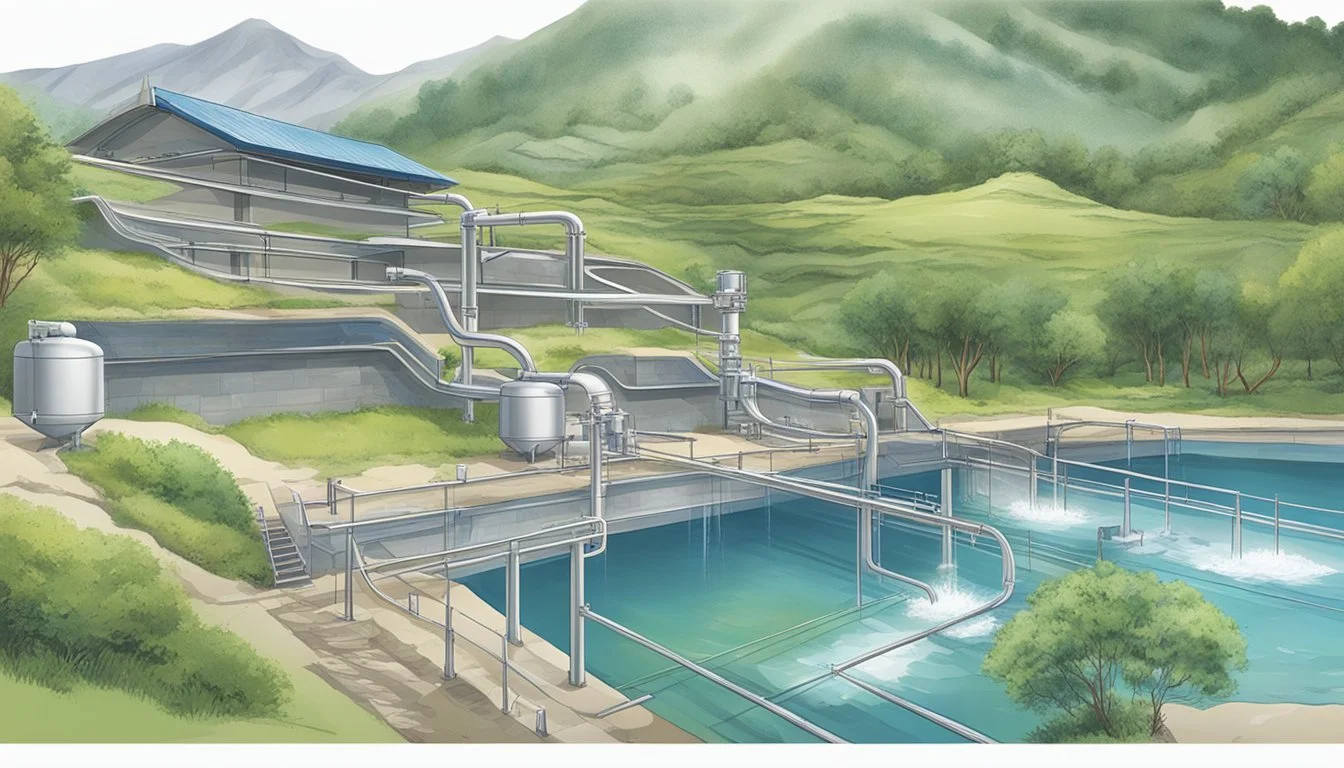Bai vs. Tru Alka
Which Bottled Water is Better? A Comparative Analysis
When it comes to choosing between Bai and Tru Alka bottled water, health enthusiasts often weigh the hydration and health benefits offered by each brand. Bai is known for its antioxidant-rich formula, featuring ingredients like coffee fruit extract and tea extract, which contribute to its low calorie and low sugar profile. Additionally, Bai’s use of alkaline minerals and a balanced pH makes it an appealing option for those seeking a health-conscious drink.
On the other hand, Tru Alka prides itself on providing pure alkaline water with a focus on maintaining a higher pH level to support optimal hydration. Fans of Tru Alka appreciate its clean taste and the purported benefits of alkaline water, such as improved acid-base balance in the body.
For individuals prioritizing antioxidant content and a blend of natural ingredients, Bai stands out as the better choice. Yet, for those who are more focused on achieving superior hydration through high pH levels, Tru Alka offers a compelling alternative. Exploring these factors can help consumers make an informed decision tailored to their specific health goals and preferences.
Comparative Background
Bai and Tru Alka offer distinct approaches to bottled water, each with unique ingredients and origins. This section delves into their brand philosophies, primary ingredients, and water sources.
Origin and Brand Philosophy
Bai Water originates from the innovative approach of adding functional benefits to hydration. Bai was launched by Ben Weiss in 2009 and has since focused on enhancing water with antioxidants and natural flavors. Their philosophy revolves around combining taste and health, using ingredients like coffee fruit extract to provide antioxidants without adding significant calories or sugar.
Tru Alka is rooted in the concept of natural purity and alkalinity. The brand emphasizes sourcing its water from pristine natural springs, aiming to offer a balanced pH level that supports overall well-being. Tru Alka positions itself as a cleaner, more natural choice, free from artificial additives. This philosophy targets consumers interested in both hydration and maintaining an alkaline diet.
Primary Ingredients and Water Source
Bai Water utilizes a mix of purified water, antioxidants, and natural flavors. The key ingredient, coffee fruit extract, provides beneficial antioxidants while keeping sugar and calorie content low. Bai also incorporates a blend of vitamins, such as Vitamin C, and sometimes adds minerals to enhance the water’s benefits. This combination aims to offer a functional beverage suitable for health-conscious individuals.
Tru Alka focuses on using natural spring water as its base. The brand prides itself on minimal processing to maintain the natural quality of the water. Tru Alka boasts a naturally higher pH level, achieved through the natural mineral content of the spring water. This approach ensures that the water is not only hydrating but also contributes to the body's alkaline balance, a key selling point for health enthusiasts.
Health and Nutritional Profile
When comparing Bai and Tru Alka, it’s vital to look at their health benefits, hydration capabilities, and nutritional components. This includes the presence of antioxidants and minerals, how the pH levels influence alkalinity, and the impact of calories and sweeteners on the overall product.
Antioxidants and Mineral Content
Bai water incorporates antioxidants from natural sources like coffee fruit extract and fruit juices. These antioxidants can promote cellular health and might aid in reducing oxidative stress. Bai also uses vegetable juice concentrate, which adds to its nutritional value without relying on artificial colorants.
In contrast, Tru Alka focuses on providing essential minerals like magnesium, calcium, and potassium. These minerals help maintain electrolyte balance and potentially enhance hydration. Tru Alka’s inclusion of potassium bicarbonate is specifically beneficial for keeping electrolytes balanced during activities that cause sweat loss.
PH Levels and Alkalinity
Tru Alka is formulated to be alkaline water with a higher pH level, usually around 8 to 9. This high pH can help neutralize acidity in the body, supporting pH balance and potentially improving digestion and metabolic functions.
Bai, however, does not market itself as alkaline water. Its pH level is closer to that of regular bottled water, which generally ranges between 6.5 and 7. This makes Bai suitable for hydration but doesn’t target the specific benefits associated with high-pH water.
Caloric and Sweetener Analysis
Bai waters are low-calorie, with only 10 calories per bottle. They achieve their sweetness using stevia and erythritol, which are low-calorie sweeteners. Cutting down on sugar and calories makes Bai a favorable option for those watching their caloric intake.
Tru Alka water typically contains zero calories, emphasizing a lack of sweeteners altogether. This makes it an ideal choice for individuals who prefer plain, unflavored water without any additives. While Bai’s sweetened profiles add diversity in flavor, Tru Alka offers a purer hydration experience.
Both Bai and Tru Alka provide specific health benefits, but their nutritional profiles and the presence of additives cater to different preferences and needs.
Taste and Flavors
Bai and Tru Alka offer unique taste experiences through their distinct flavor profiles and ingredient choices, each appealing to different taste preferences. Both brands highlight natural ingredients, but they diverge in their flavor variety and sweetness levels.
Flavor Variety and Naturalness
Bai is known for its wide range of flavored waters, which are infused with antioxidants from coffee fruit extract. The brand offers flavors like Kula Watermelon, Ipanema Pomegranate, and Costa Rica Clementine. Each flavor aims to provide a refreshing experience while delivering subtle hints of the fruit it represents.
Tru Alka, on the other hand, places a stronger emphasis on natural essences. Their flavors are fewer but focus on being more straightforward and clean-tasting. Common flavor options include cucumber mint, lemon, and lime. Tru Alka's approach is to create a crisp and pure taste that complements their alkaline water base, appealing to those who prefer milder, more natural flavors without added complexity.
Sweetness and Aftertaste
Bai's beverages typically contain 1 gram of sugar per serving and are sweetened with stevia leaf extract. This combination provides a mild sweetness that does not overpower the natural fruit flavors. The use of stevia helps keep the calorie count low, around 10 calories per bottle, making it an attractive option for those monitoring their sugar intake. Despite the artificial additive, many find Bai's flavor profile balanced and pleasant, with a slight lingering sweetness.
Tru Alka's flavored waters rely solely on natural flavors without added sugars or artificial sweeteners. This results in a cleaner taste with no aftertaste, appealing to people who prefer a pure, unadulterated water experience. The lack of sweetness in Tru Alka may not satisfy those accustomed to more flavorful or sweeter beverages but offers a neutral option suitable for mixing with other drinks or enjoying on its own.
Each brand caters to different taste preferences, with Bai attracting those who enjoy a hint of sweetness and fruit essence, and Tru Alka appealing to purists seeking a clean, straightforward hydration option.
Packaging and Sustainability
Bai and Tru Alka offer distinct approaches to packaging and sustainability, addressing bottle design and environmental considerations. Both brands aim to balance user safety with minimal environmental impact.
Bottle Design and Safety
Bai bottles are designed with consumer convenience and safety in mind. They use BPA-free plastic, which is considered safer for drinking water. The bottles are lightweight and feature an ergonomic design, making them easy to carry and use.
Tru Alka also emphasizes safety in their bottle design. Their bottles are constructed from recycled plastic, promoting reuse. This focus on recycled materials not only reduces waste but also lessens the demand for new plastic. Tru Alka’s bottles are similarly lightweight and user-friendly, ensuring safe and convenient hydration.
Environmental Impact and Recycling
Bai’s commitment to sustainability includes using recyclable materials for their bottles. Their packaging is designed to be easily recyclable, helping reduce the environmental footprint of their products. Bai also engages in initiatives aimed at encouraging recycling among consumers to minimize waste.
Tru Alka takes a strong stance on environmental impact by using recycled plastic in their bottles. This significantly cuts down on plastic waste and supports a circular economy. Tru Alka's efforts extend to their production processes, which are designed to be as eco-friendly as possible, thus aiming to achieve a lower overall environmental impact.
Hydration Efficiency
When comparing Bai and Tru Alka, hydration efficiency is a key factor to consider. Their ingredient profiles, specifically the inclusion of electrolytes, play a critical role in maintaining and improving hydration.
Electrolytes and Hydration Benefits
Electrolytes such as sodium, potassium, and magnesium are essential for optimal hydration. Tru Alka contains a balanced blend of these electrolytes, which helps in faster rehydration, especially after physical exertion. These minerals aid in maintaining fluid balance, muscle function, and overall hydration.
Bai also includes electrolytes, mainly from the added alkaline minerals. The beverage boasts a pH of 7.5 or higher, which can help neutralize acidity in the body. Additionally, the antioxidants from coffee fruit extract not only provide health benefits but also support cellular hydration.
Comparison Table:
Bai Tru Alka pH Level 7.5+ Neutral to slightly alkaline Electrolytes Contains alkaline minerals Contains a balanced blend of sodium, potassium, and magnesium Additional Benefits Antioxidants from coffee fruit extract Aimed at improving fluid balance
Both waters offer unique advantages, with Tru Alka focusing on traditional electrolyte support and Bai combining hydration with antioxidant benefits.
Product Range and Accessibility
When evaluating the product range and accessibility of Bai and Tru Alka, it is essential to consider the variety of available options and their market presence. Both brands aim to differentiate themselves by offering distinctive water products and positioning their brands prominently in retail spaces.
Variants and Market Availability
Bai offers a diverse range of flavored and antioxidant waters. Their product lineup includes flavored options like Brasilia Blueberry and Costa Rica Clementine, which are touted for their low-calorie count and antioxidant infusion. In addition to flavored waters, Bai also provides sparkling waters that appeal to those looking for a fizzy alternative.
Tru Alka focuses primarily on alkaline water with a high pH balance. While they do not offer flavored or sparkling options, their emphasis on alkaline water aims at health-conscious consumers seeking pH-balanced hydration. Tru Alka’s presence is noticeable in health food stores and specialty retailers, leveraging its health-focused brand identity.
Price Point and Value Proposition
Bai’s pricing is competitive, especially considering the added benefits of antioxidants and flavors. A typical bottle of Bai Antioxidant Water retails for around $1.50 to $2.00, making it an attractive option for those looking for added value in their hydration choices. The brand’s availability on platforms like Amazon enhances its accessibility.
Tru Alka’s price point is slightly higher due to its specialized formulation. A bottle of Tru Alka generally ranges from $2.00 to $2.50. Given its focus on alkaline water and health benefits, Tru Alka justifies its pricing with a targeted value proposition focused on pH balance and natural alkalinity. Though less widely available than Bai, Tru Alka is expanding its reach into mainstream grocery stores.
Both brands carve niches in the bottled water market by emphasizing unique benefits and ensuring market presence through strategic pricing and distribution.
Specialty Options and Consumer Preferences
Bai and Tru Alka both cater to specific market segments with unique features. These sections will explore how each brand addresses dietary needs and offers functional enhancements.
Dietary Considerations
Bai beverages are low in calories, with just 10 calories per bottle and 1 gram of sugar. This makes them an appealing choice for those monitoring their sugar intake or following low-calorie diets.
They are also gluten-free and vegan, suitable for various dietary restrictions.
Tru Alka, being pure alkaline water, contains no calories and no sugar, addressing the needs of health-conscious consumers who prefer a neutral, unflavored option. Its high pH level can be a draw for those looking to balance acidity in their diets.
Both brands offer nutritional benefits that appeal to different dietary preferences, from calorie-conscious individuals to those with specific ingredient sensitivities.
Functional Enhancements
Bai includes several functional enhancements in its beverages. These include infusions of antioxidants and Vitamin C, providing potential health benefits such as supporting the immune system and neutralizing free radicals.
Some Bai products may also contain natural caffeine from tea extract, offering a mild energy boost without the intensity of a traditional energy drink.
Tru Alka focuses on the alkalinity of its water, which may help with hydration and maintaining optimal pH levels in the body. While Tru Alka lacks added nutrients or supplements, its primary appeal lies in its purity and single functional attribute of being alkaline.
These functional enhancements make both Bai and Tru Alka attractive to consumers seeking more than just hydration from their bottled water.
Scientific Evidence and Health Claims
The health benefits and safety of Bai and Tru Alka are both supported and questioned by scientific studies. This section examines the research findings and regulatory standards relevant to both bottled waters.
Clinical Studies and Research Findings
Bai Water: Bai's use of fruit-based sweeteners, such as watermelon juice, may have cognitive benefits, as indicated by a 2021 clinical trial. The study suggested that such ingredients can improve brain function. Additionally, Bai avoids artificial colorants, opting for healthier vegetable juice concentrates.
Tru Alka Water: Alkaline water, including Tru Alka, has a higher pH, making it less acidic. Some studies suggest it helps with hydration and may reduce oxidative stress. Research from 2016 indicated that alkaline water could enhance blood flow and oxygen delivery in athletes. There is also some evidence suggesting it might help prevent heartburn and replenish sweat loss.
Regulatory Compliance and Safety Standards
Bai Water: Bai complies with U.S. Food and Drug Administration (FDA) standards, utilizing safe ingredients with no known harmful side effects. The choice of natural colorants and sweeteners positions Bai as a safer alternative to drinks with artificial additives. Regular quality checks ensure the safety of lead and sodium levels in Bai beverages.
Tru Alka Water: Tru Alka meets regulatory standards to maintain its alkaline nature and safety for consumption. The FDA regulates bottled water sold as alkaline, ensuring that any added nutrients are safe and beneficial. While there are claims of detoxification and anti-aging, these are not widely supported by scientific evidence. Safety regarding lead and sodium content is regularly monitored.
Both Bai and Tru Alka strive to provide health benefits while adhering to safety standards. However, ongoing research and regulation remain crucial to validating these claims and ensuring consumer safety.
Purification and Filtration Techniques
Bottled water brands like Bai and Tru Alka use different techniques to purify their water, each affecting the quality and mineral content. This section explores the primary purification methods to help consumers understand what they’re drinking.
Reverse Osmosis and Distillation Processes
Reverse osmosis uses a semi-permeable membrane to remove impurities including bacteria, viruses, and dissolved salts. The process forces water through the membrane, leaving contaminants behind. This method is effective but may also remove naturally occurring minerals essential for health.
Distillation involves boiling water and then condensing the steam back into liquid. This method effectively eliminates a wide range of contaminants such as bacteria and heavy metals but may also strip beneficial minerals.
Both techniques produce purified water, though some brands reintroduce minerals post-filtration for better taste and hydration.
Comparison of Filtration Methods
Filtration methods can vary significantly between brands. Some use ozonation, adding ozone to disinfect the water by killing microbes and bacteria. Others prefer chlorination, adding chlorine to neutralize contaminants.
Natural spring water often undergoes minimal treatment to maintain its natural minerals and high pH levels. By contrast, mountain spring water may be filtered to remove impurities while preserving its mineral content.
Bai utilizes a specific blend that includes alkaline minerals to elevate pH, enhancing hydration. Filtering methods and subsequent mineral addition define the overall quality and health benefits of the water.








